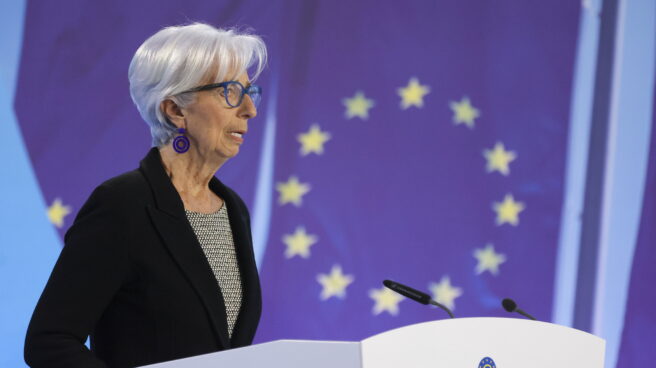

European Central Bank President Christine Lagarde
European Central Bank (ECB) President Christine Lagarde assured that they will continue this cycle of raising interest rates, thus eliminating the possibility that rate hikes will pause before they begin to cut again. At its May meeting, the agency softened the rate hike by 25 basis points, which puts them at the highest level since October 2008 at 3.75%.
Lagarde noted at a press conference following the Governing Board meeting that they have come a long way in the last nine months. “but there is another way to cover up”, for which he added that they would continue this cycle of rate hikes. With this statement, the President departed from market expectations, especially after the collapse of four medium-sized banks in the US and Credit Suisse, that rate hikes should have stopped, and many even expected a fall before the end of the year. .
“We’re not stopping rate hikes and there’s still a long way to go.” Lagarde pointed to journalists’ questions and insisted that this cycle’s monetary policy is a journey that “isn’t over yet.”
As the first sword of the European organization explained, the full impact of the rate hike on the real economy is not yet visible, for this reason he added that the level of interest rates is “still not restrictive enough.” Here, Lagarde left the door open again to keep the price of money going up in the next meetings.
“It is clear that the ECB is not stopping. We know there is still work to be done,” Lagarde said. In this sense, he explained that there was a spirit of determination among the members of the Governing Board to fight inflation, adding that there were different opinions, although in the end a decision was made to increase by 25 basis points. reputedly “very strong”.
“Some thought it was appropriate to raise rates by 50 basis points and others by 25, but I have not heard anyone ask for zero,” the ECB president said, suggesting that the institution will continue to raise rates at future meetings.
On the other hand, Lagarde insisted that governments take advantage of the reduction in energy-related price pressures to reverse support measures taken during the energy crisis and thus avoid higher inflation in the medium term.
Source: El Independiente